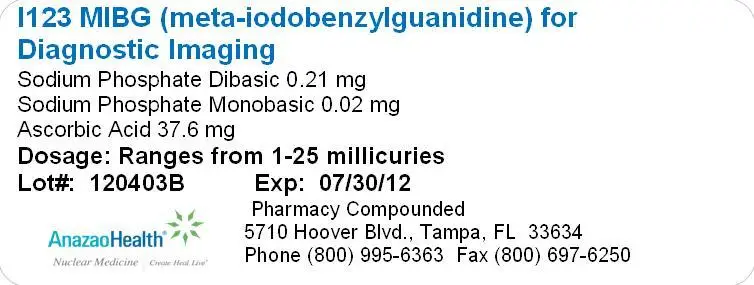Adverse Reactions/Side Effects
At present, there are no known side/adverse effects associated with the use of diagnostic dosages of I-123 MIBG.
PREPARATION FOR THIS TEST
Special preparatory instructions may apply; patient should inquire in advance.
Administration of potassium iodide or Lugol’s solution one day before administration of I-123MIBG and for 6 days after administration to prevent or reduce thyroid uptake of radioiodide contaminant.
GENERAL DOSAGE INFORMATION
Radiopharmaceuticals are to be administered only by or under the supervision of physicians who have had extensive training in the safe use and handling of radioactive materials and who are authorized by the Nuclear Regulatory Commission (NRC) or the appropriate State agency, if required, or, outside the U.S., the appropriate authority. To minimize uptake of radioactive iodine by the thyroid, potassium iodide (SSKI, 60 mg twice a day) or Lugol's solution (1 drop three times a day) may be used, beginning at least 24 hours before and continuing for 6 days after administration of I-123 MIBG.
Safety considerations for handling this radiopharmaceutical:
Improper handling of this radiopharmaceutical may cause radioactive contamination. Guidelines for handling radioactive material have been prepared by scientific, professional, state, federal, and international bodies and are available to the specially qualified and authorized users who have access to radiopharmaceuticals.
IOBENGUANE I-123 INJECTION
Usual adult administered activity for diagnosis of tumors or medullary disease:
Intravenous, 370 megabecquerels (10 millicuries) of I-123 mIBG, with a minimum specific activity of 740 megabecquerels to 1.3 gigabecquerels (20 to 35.6 millicuries) per mg (at time of calibration), administered over a period of fifteen to thirty seconds.
Usual pediatric administered activity for diagnosis of tumors or medullary disease:
In children up to 18 years of age, dosage must be individualized by physician.
Usual geriatric administered activity:
See usual adult administered activity.
Thank you,
AnazaoHealth Corporation





